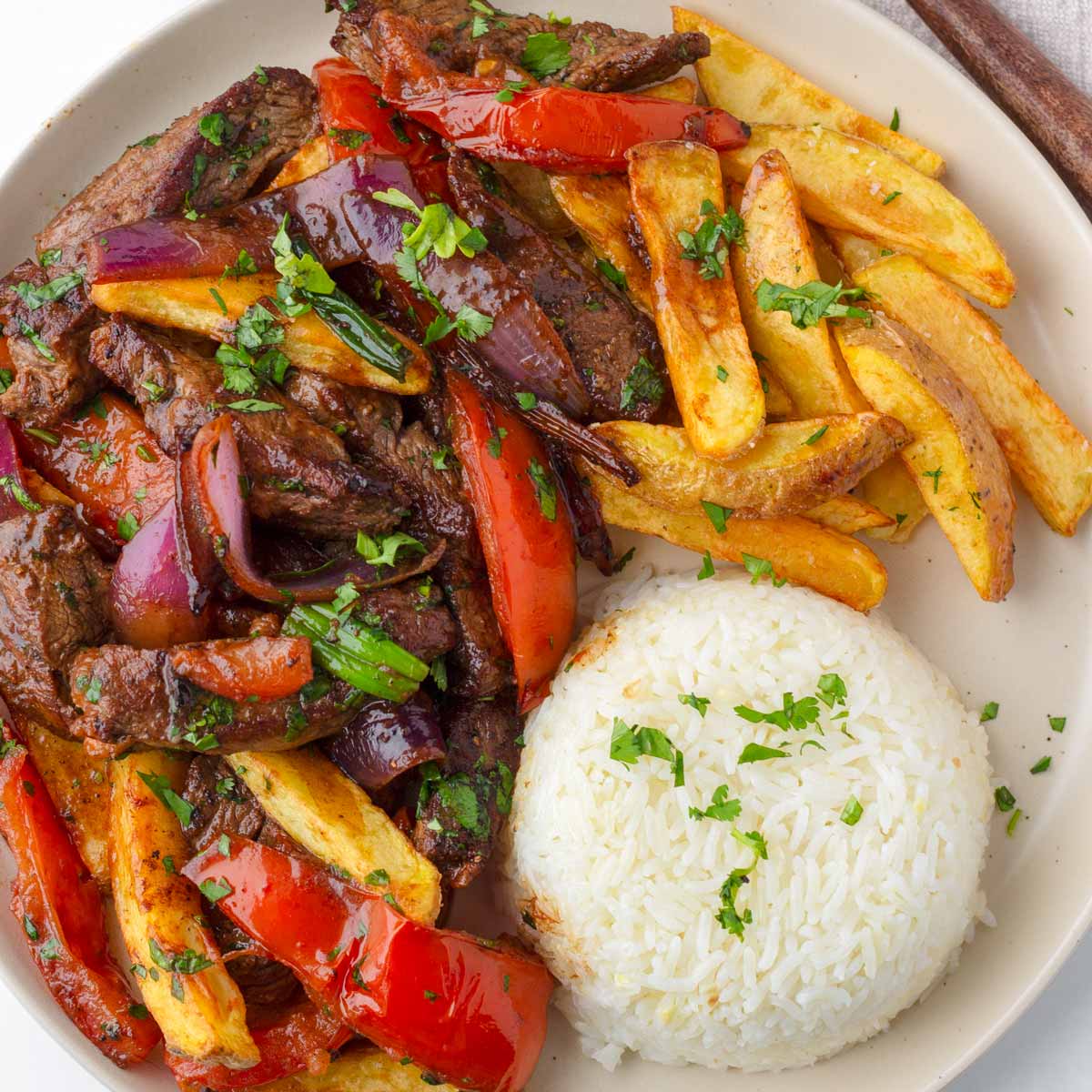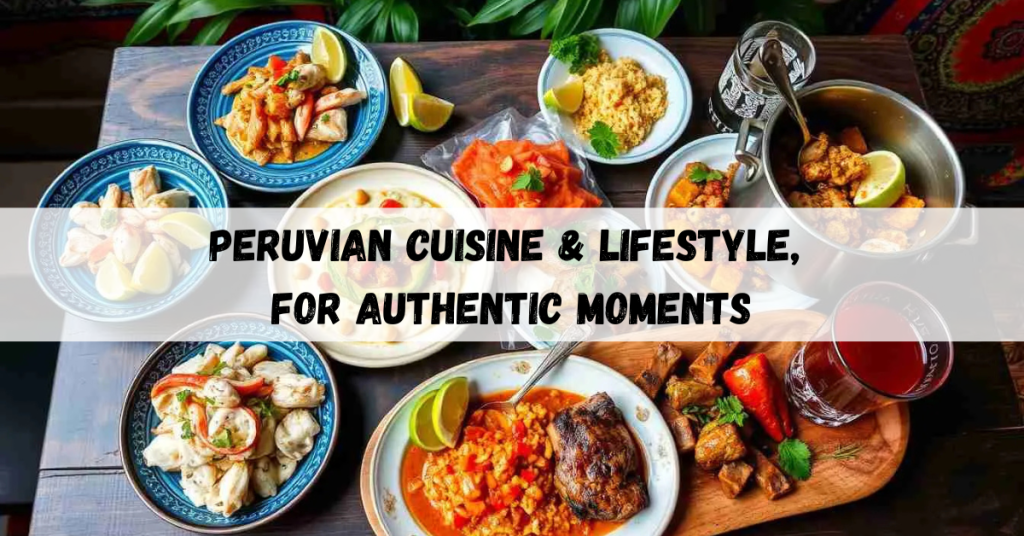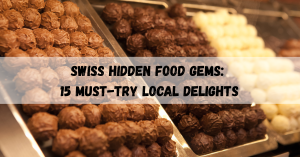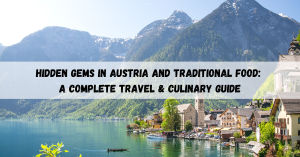Peru is a country where food, lifestyle, and traditions blend seamlessly, creating one of the most vibrant cultural experiences in the world. Whether you’re savoring a plate of Ceviche on Lima’s coastline, exploring indigenous markets in the Andes, or dancing at the Inti Raymi festival, every moment in Peru is rich in heritage.
This guide takes you through Peruvian cuisine, daily life, and traditions, highlighting the best food experiences, cultural practices, and must-visit places for an unforgettable journey!
Peruvian Cuisine, A Culinary Treasure

Peruvian food is a reflection of the country’s rich history, indigenous roots, and international influences. With flavors inspired by Incan, Spanish, African, Chinese, and Japanese cuisines, Peru’s gastronomy has earned global recognition. It’s no surprise that Lima is called the “Culinary Capital of South America.”
Best Peruvian Dishes You Must Try
- Ceviche: Peru’s national dish, made with fresh raw fish marinated in lime juice, served with sweet potato and corn.
- Lomo Saltado: A Chinese-Peruvian fusion dish featuring stir-fried beef, onions, tomatoes, and fries.
- Aji de Gallina: A creamy, mildly spicy chicken dish with a yellow pepper sauce.
- Rocoto Relleno: Stuffed spicy red peppers, a specialty from Arequipa.
- Pachamanca: A traditional dish where meat and vegetables are cooked underground with hot stones.
Traditional Andean Food & Incan Cuisine
The Andes Mountains have shaped much of Peru’s food culture, with staples like quinoa, corn, and potatoes.
- Cuy (Guinea Pig): A delicacy in the Andean region, often roasted and served whole.
- Choclo con Queso: Giant Andean corn with fresh cheese, a simple yet delicious snack.
Peruvian Street Food, A Taste of Daily Life
- Anticuchos: Grilled beef heart skewers, marinated in spices and cooked over an open flame.
- Picarones: Peruvian-style doughnuts made with sweet potato and squash, drizzled with molasses syrup.
Best Peruvian Desserts & Sweet Treats
- Alfajores: Soft cookies filled with Dulce de Leche (caramel).
- Mazamorra Morada: A purple corn pudding flavored with fruit and cinnamon.
Famous Peruvian Drinks & Beverages
- Pisco Sour: Peru’s signature cocktail, made with Pisco, lime, egg white, and bitters.
- Chicha Morada: A refreshing purple corn drink with cinnamon and pineapple.
- Inca Kola: A sweet, bubblegum-flavored soda loved by Peruvians.
Best Peruvian Restaurants for Authentic Cuisine

Want to experience the best of Peruvian gastronomy? Here are the top-rated restaurants in Peru
| Restaurant | Location | Famous For |
|---|---|---|
| Central | Lima | Ranked among the world’s best restaurants, known for innovative Peruvian dishes |
| Maido | Lima | A top Nikkei (Japanese-Peruvian fusion) restaurant |
| Panchita | Lima | Traditional Peruvian comfort food and street food specialties |
| Chicha | Cusco | Owned by renowned chef Gastón Acurio, specializing in Andean cuisine |
| La Nueva Palomino | Arequipa | Authentic Arequipeño dishes like Rocoto Relleno |
Peruvian Lifestyle, A Blend of Tradition & Modernity
Peruvian lifestyle is a fascinating mix of ancient traditions and contemporary influences. While Lima, Arequipa, and Cusco are hubs of modern living, rural communities in the Andes and Amazon continue to preserve their indigenous customs, languages, and ways of life. Family values, hospitality, and a deep connection to history remain at the heart of Peruvian culture.
Traditional Peruvian Clothing & Fashion
- Women’s Attire: Women in the highlands wear colorful polleras (skirts), embroidered blouses, and handwoven shawls (llicllas). Some also wear bowler hats, a traditional influence from colonial times.
- Men’s Attire: Andean men wear ponchos, chullos (wool hats with earflaps), and woven belts, often featuring intricate geometric patterns.
- Modern Fashion: In urban areas, Peruvians blend traditional fabrics like alpaca wool with contemporary styles, creating a unique fashion identity influenced by both indigenous and European trends.
Family & Social Life in Peru
- Strong Family Bonds: Families are central to Peruvian life, with multiple generations often living together or staying closely connected.
- Festivals & Celebrations: Social gatherings revolve around religious festivals, national holidays, and Andean traditions, such as Inti Raymi (Festival of the Sun) and Fiesta de la Candelaria.
- Respect & Hospitality: Peruvians are warm and welcoming, often greeting guests with a kiss on the cheek or a handshake, depending on the region.
Peruvian Work & Leisure Balance
- Work Culture: Urban professionals in Lima follow a structured workweek, while rural communities often engage in farming, weaving, and artisanal crafts.
- Leisure Activities: Weekends are for family outings, football matches, and visits to the countryside. In cities, nightlife thrives in areas like Barranco (Lima) and San Blas (Cusco).
Music & Dance in Everyday Life

- PanchitaLima: Traditional instruments like the pan flute (zampoña), charango (small Andean guitar), and cajón (Afro-Peruvian percussion box) are commonly played.
- Popular Dance Forms: Peruvians celebrate their culture through dance, with styles like Marinera (elegant coastal dance), Huayno (Andean folk dance), and Festejo (Afro-Peruvian dance).
Best Time to Visit Peru for Food & Culture
| Season | Best For |
|---|
| May – September | Food festivals, dry season for traveling, best for outdoor dining |
| December – March | Coastal food tours, fresh seafood in Lima |
Peru’s food, lifestyle, and traditions make it one of the most exciting travel destinations in the world. Whether you’re exploring ancient Incan cuisine, shopping for handcrafted textiles, or enjoying a Pisco Sour in Lima, every experience reflects Peru’s deep cultural roots.
FAQs
1. What are the most popular traditional Peruvian dishes?
Peruvian cuisine is world-famous, with must-try dishes including ceviche, lomo saltado, aji de gallina, rocoto relleno, and pachamanca. Each dish reflects a mix of Incan, Spanish, African, and Asian influences, making Peru a top gastronomic destination.
2. What are some key elements of Peruvian lifestyle and daily life?
Peruvians value family, hospitality, and cultural traditions. In cities like Lima and Cusco, modern life blends with historic influences, while rural communities preserve indigenous customs, Andean music, and artisanal crafts. Social life revolves around festivals, traditional markets, and community gatherings.
3. What should travelers know about shopping in Peru?
Peru is known for its handwoven textiles, silver jewelry, alpaca wool products, and traditional pottery. The best places for shopping include Pisac Market (Sacred Valley), San Pedro Market (Cusco), and Miraflores artisan markets in Lima. Bargaining is common in local markets.
4. What are the most famous Peruvian festivals?
Peru hosts vibrant cultural and religious festivals such as Inti Raymi (Festival of the Sun), Fiesta de la Candelaria, and Mistura (Peruvian food festival). These events showcase Andean music, traditional dances, and Peruvian gastronomy.
5. When is the best time to experience Peruvian food and traditions?
The best time to visit Peru for cultural experiences and food tourism is during major festivals, from June to September. The dry season is perfect for exploring traditional Andean villages, food markets, and heritage sites, while Lima’s culinary scene is great year-round.




